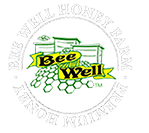Honeybees and Spring
The Christmas Holidays have passed and now we begin to look towards working with our honeybees and Spring. Tired of long, damp winter days we look forward to opening the hives and evaluating the condition of our bee colonies. New beekeepers are reading and learning all they can as they prepare to establish hives for the first season. It is a great time to look for classes as most local bee associations will offer them in Jan-Feb. Bee Well Honey offers a one day Boot Camp in early March.
Red Maples are one of the first major nectar and pollen sources for the bees. You will notice the reddish blush in the tops of trees. Red Maple flowers are very small but their resources help the small overwintered colonies start their buildup for the major flowering season. Most beekeepers do not see any surplus honey from the Red Maple bloom. Cool chilly weather will prevent the bees from harvesting on many late winter days.
The pollen brought in from the Red Maples is not red but is actually a light greenish color.
Remember, bees do eat pollen but its major use is to feed their baby bees. It is a protein source. They don’t really need pollen to make honey but they do need it to make bees !
Knowing the natural bloom time of local plants is of great benefit to the beekeeper.



